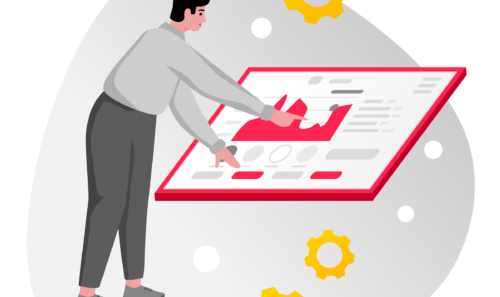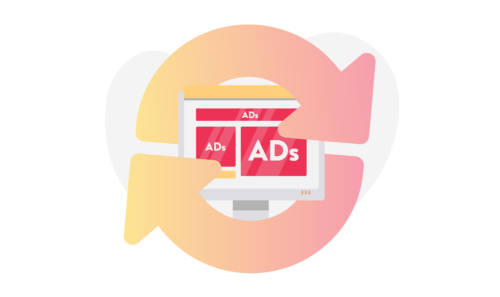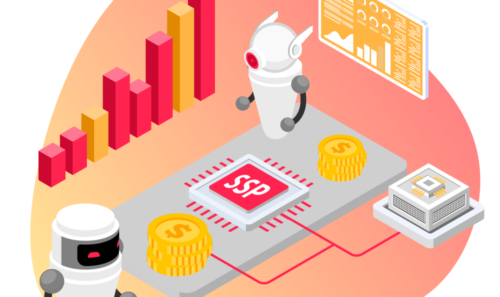One Year With COVID-19: Programmatic’s Performance Prior To And During The Course Of The Pandemic
Last year was certainly a year that will go down in the annals history. The crisis that rocked the world was unprecedented; and it continues to this day. The economies of most countries are recording GDP declines, with unemployment rising in many sectors.
2020 was to be a year of high earnings and advertising spend. In line with trends, revenues from Programmatic were set to grow, the more so because the calendar included major events such as the Olympic Games in Japan and Euro 2020 – sporting events that have always had a large impact on the results of Publishers and Advertisers.
Everything was turned on its head in February and March, when, with an increase in COVID-19 cases, many countries decided to introduce lockdowns, and as a result peoples’ lives were impacted immeasurably. Changes were felt acutely by many industries, including the Advertising sector, where in many cases Advertising budgets were reduced, which had a commensurate impact on the earnings of Publishers. And so, all performance trends that had been expected in 2020 failed to materialize.
Key observations
1. With the start of the Covid-19 pandemic, most Publishers recorded declines in the March-May period, with a noted upward trend in the third quarter.
2. Compared year on year for the Black Friday and Christmas periods, the inventory value of Publishers was higher by about 30%.
3. Advertisers and the Tourism sector recorded the largest declines; and so far there has been no visible growth trend.
Change of trends or just a hiccup?
Publishers understand that the weak first quarter results were due to the absence of advertising budgets, which are usually agreed on in February / March and in line with the trend, the last month of the first quarter is usually a period of growth as compared to January. This did not happen in 2020.
With the onset of the pandemic, Publishers noted a decline in the value of their inventory. In most cases, however, there was an increase in ad requests as most people had to stay at home and therefore traffic to the sites increased. How was all this reflected on specific categories?
COVID-19’s impact on specific categories of the Digital Publishing
News Publishers
Publishers dealing with news could see an approximate 25% increase in traffic around March; whereas the first quarter in terms of website traffic was at a stable, unchanging level. The specificity of news services is based on the recording of peak traffic to websites in specific cases, i.e. important political, social, sports or cultural events. Higher traffic continued in April and started to decline in May. Traffic has been stable since then.

By focusing on the inventory value of News Publishers, it can be seen that the declines in March and Q2 are much lower when compared to other industries. Advertisers were aware that these sites would attract the most valuable users during this period. Interestingly, from July onwards, higher rates could be noted as compared to 2019. We are optimistic about 2021, where we are observing the best rates for the last 2 years. If scheduled sports events such as Euro 2021 or the Olympics do take place, it can be assumed that this will be one of the best years for news site advertising.


Hobbies, Games & Leisure
It would seem that on websites that relate, among other things, to games, the traffic during the pandemic would turn out to be much higher. Based on data from our Publishers, we can see that in the month in which the pandemic started, the traffic was higher to that of the previous year. Then a drop in traffic during the holiday season can be seen, the same as for 2019.

We realise that the sample we rely on may differ on the market, and in some cases the increase in hobby sites may be more pronounced.
The metrics that reveal best what happened last year are those that determine the Publisher’s revenue, that is, the rCPM and eCPM.


Looking at 2019, we can see how the Advertising market performed, i.e., a weaker first quarter with an increase in the last month of the quarter, a decline at the beginning of each subsequent quarter and an upward trend. Higher RPM during the summer period resulted from a decrease in traffic, which can be noted in the previous chart.
If we look at 2020, we can see that the first two months of the year were quite similar, and in March, a decline in RPM and eCPM was not that evident.
The difference between 2019 and 2020 is that in the second quarter the inventory value of Game / Hobby Publishers in the eyes of Advertisers increased much faster, whereas 2020 growth was much slower. We know that the second quarter was still a time of uncertainty on the market, which meant that spending in the industry also grew at the same pace as before.
What is worth noting is that the recovery and increase in spending is visible at the end of Q3, where the eCPM and RPM rates were higher as compared to 2019.
E-commerce
The e-commerce market has been developing dynamically around the world in recent years, noting year on year increases on many levels, including the area of Programmatic Advertising. With the pandemic, it was thought more people staying at home would mean that traffic on e-commerce sites would increase visibly. As matters transpired, it depended on the type of sale advertising. If we look at the Apparel market, however, this increase was not discernible. Indeed, because people were staying at home, they didn’t need to buy new clothes, so in the first months we could note a decrease in ad requests. A visible increase started from the May period, which could be put down to an easing of the warnings introduced in many countries.

If we look at the value of inventory, it can be seen that March in terms of RPM was similar year on year, but eCPM recorded a decrease. Second and third quarters with significant year-on-year differences, but it is worth noting that at the same time a very significant increase in website traffic can be seen (it is known larger traffic is more difficult to monetise, so metrics such as RPM and eCPM usually record declines).


Nevertheless, the fourth quarter ended with slight differences in value, which resulted in a large increase in revenue year on year over the same period. What else is worth mentioning is the data for 2021, where the inventory value is only slightly lower with a 40% increase in traffic.
COVID-19’s impact on specific Digital Advertising sectors
In the previous section we focused mainly on performance from the Publisher level, yet it is also important to show how the current global situation has affected Advertisers, and which sectors have been hit the most.

Looking at the individual sectors, we can see that each of them noted a reduced level of spending from March. It also shows that the Black Friday month was stronger in 2020 than in 2019, e.g. in the Auto & Vehicles, Beauty & Personal Care or Business & Industrial sectors. In contrast, Advertisers’ spending in the Apparel sector saw a decrease.

Here we have a situation where in each sector the end of 2020 was better than the 2019 year end. The largest increase in spending is visible in the Finance, Foods & Groceries and Hobbies, Games & Leisure sectors. In some cases, the results for January 2021 are even higher as compared to the same period last year.

In the case of the Home & Garden sector, it can be noted that comparing the last quarter of 2020; and, above all, November, there was an increase in spending by almost 45%. This shows that despite the unusual period, Advertisers in some sectors tried to utilize unused 2020 budgets in the last months of the year, which is the period when Advertising earnings are the highest.

As in the previous cases, we had expected declines in 2020 Q2 and Q3 compared to previous years and with an increase in Q4; so here it can be seen that there are some sectors that have not increased their spending throughout 2020. These are Travel & Tourism and Real Estate: two industries that have been hard hit by the pandemic. The Travel and Tourism sector has reduced its spending to a minimum and in the case of the fourth quarter, these spendings were lower by as much as 80%. These cuts resulted from the restrictions imposed on movement and travel.
Programmatic market moving forward
Observing the trends and results on the Advertising market last year, it can be said that despite the turmoil, Programmatic quickly adapted to the new reality. In some cases, Internet Advertising was the only division in many companies that recorded increases. I believe that recent events have contributed to the fact that Advertising budgets are being viewed differently, which means that there exists the possibility of greater flexibility when it comes to future crisis situations.
Looking at the data for the first months of 2021, it can be concluded that our market is in a healthier state than many other industries, and the current reality represents an opportunity for greater development and focus on products that will help maintain stability and performance.







